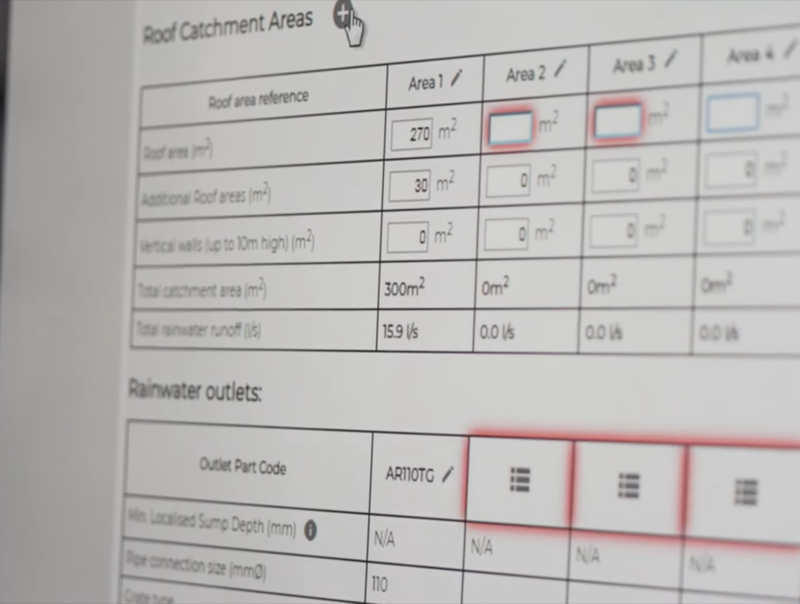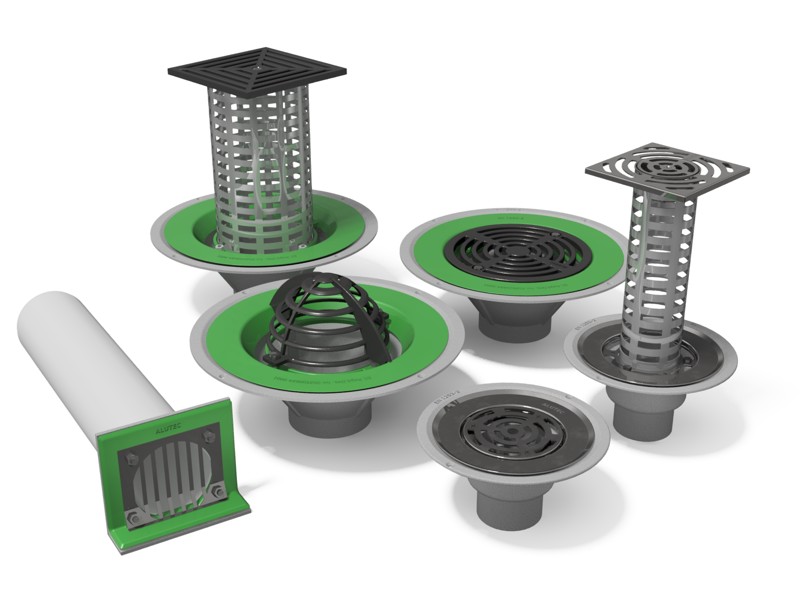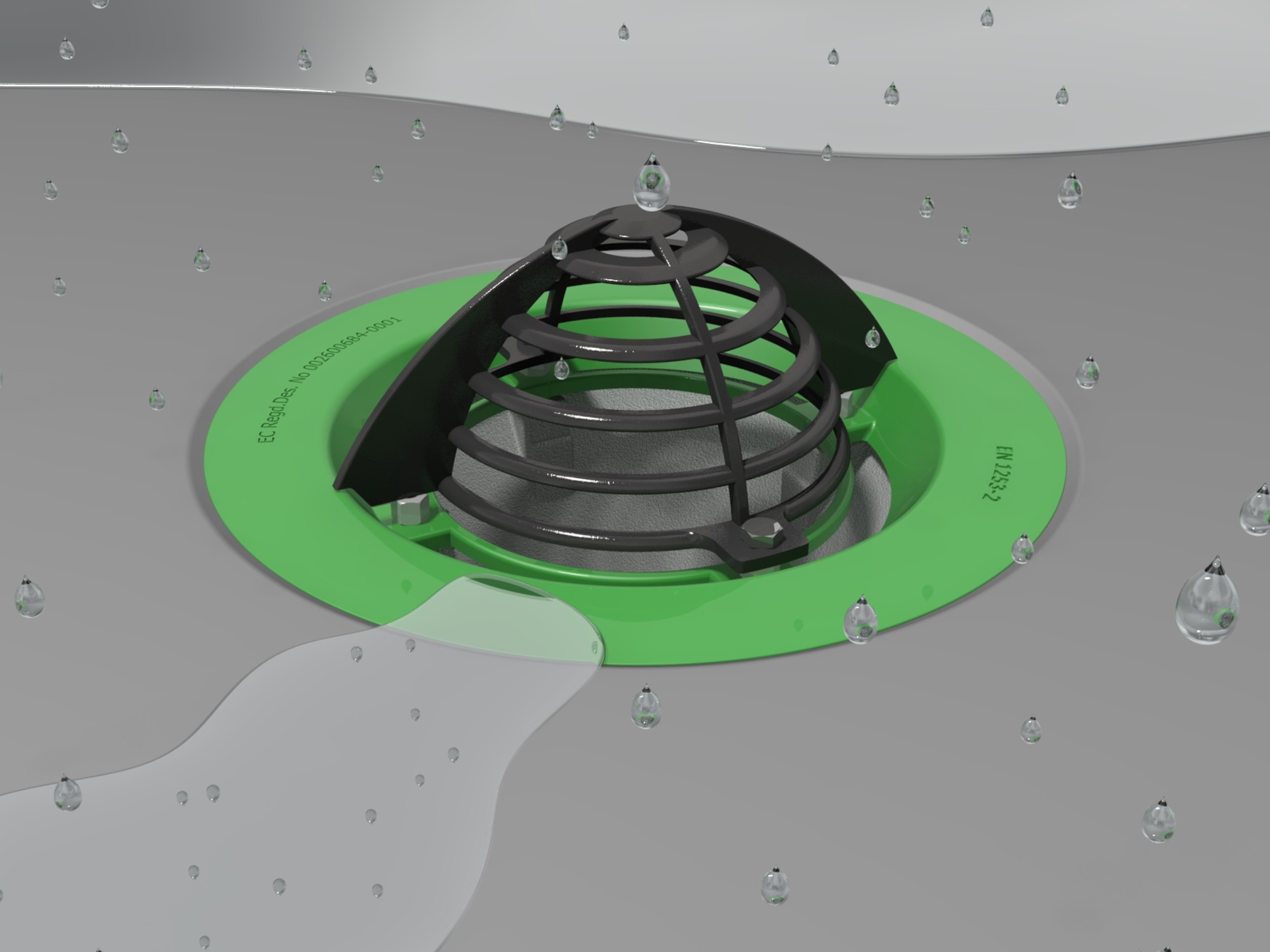Brian Bell, our Head of Technical Services, outlines the factors that need to be considered for the design and installation of flat roof drainage systems, including the required calculations and how to select the correct products for the application.
Effective rainwater drainage on a flat roof is an important part of protecting the building from the damaging effects of water ingress and preventing issues with the roof system itself. Guidance and standards for rainwater drainage are provided in the Building Regulations in England and Wales and Building Standards in Scotland, as well as the National House Building Council (NHBC) standard 7.1.5. These documents require flat roof drainage to be designed in accordance with BS EN 12056-3 - Gravity Drainage Systems Inside Buildings.
Design considerations and calculations
To determine the design of a flat roof drainage system, including the number and type of outlets, factors such as the level of rainfall and total roof area must be considered.

Level of rainfall
The geographical location of the project will determine the likely rainfall intensity. The data provided in the National Annex for the UK included in BS EN 12056 can be used to calculate the level of rainfall that can be expected. Related to this, the level of protection against extreme weather events will also influence the design of the drainage system. This is essentially a cost versus benefit calculation as creating a drainage system that can withstand the most extreme weather events will add costs and complexity.
For many buildings it may be appropriate to design the system to cope with more common storm events with the understanding that the drainage may be temporarily overwhelmed during more extreme rainfall. Especially if the excess water can overflow safely from the roof and fall clear of the building. Further guidance on this can be found in BS EN 12056-3.
Roof area
The total roof area of the flat roof must also be calculated by looking at the plan area of the roof itself and that of any roof that drains onto it. While sometimes overlooked, BS EN 12056 requires that 50% of the area of adjacent vertical surfaces is also included in the calculations. Multiplying the effective roof area by the projected rainfall intensity will provide the total rainfall runoff that must be accommodated.
Choosing the right products
There are many different roof outlet products on the market with varying capabilities, so it is essential to ensure that the most suitable one is selected.
Material and manufacture
Ensuring that the outlets are durable enough to withstand harsh weather and accidental contact, either by those accessing the roof or debris, is important. The material the outlet is manufactured from will also affect its longevity. Metal products, and in particular those manufactured from marine grade aluminium, offer greater resistance to weather and damage and have a longer lifespan when compared with PVC products. It is also important to look at the testing that the product has undergone. Rigorous testing demonstrates that it provides an effective seal against water ingress.

Compatibility
Not all outlets will be suitable for every flat roof system build up or membrane. Utilising an incompatible product may mean that it does not form a watertight seal, resulting in water ingress issues. However, there are products, such as the Marley Alutec Elite range, that have been engineered for universal fitting and designed for all types of flat roof system.
Performance
The drainage performance of the outlet must also be considered. The total rainfall runoff can be divided by the flow rate performance of the outlet to determine how many are required. Selecting products with a higher flow rate will mean that the total number can be reduced. This in turn reduces the complexity of the pipework design and the overall cost.
Manufacturer support
Leading manufacturers will be able to provide technical guidance on the design and specification of drainage for flat roofs, including rainwater calculations. At Marley Alutec we have also created an online flat roof drainage tool. This can be used to calculate the number of outlets required as well as confirm product suitability and full compliance with BS EN 12056-3.

Effective and compliant flat roof drainage is essential to prevent deterioration of the roof system and ultimately damage to the fabric of the building. However, the calculations are not always simple, and a wide range of factors need to be considered.
Choosing the correct, high quality roof outlets from a manufacturer that can provide the required support will help simplify the process and provide peace of mind.
To calculate your flatroof requirements access our drainage calculators! Or learn more about our Elite Outlet range here!

